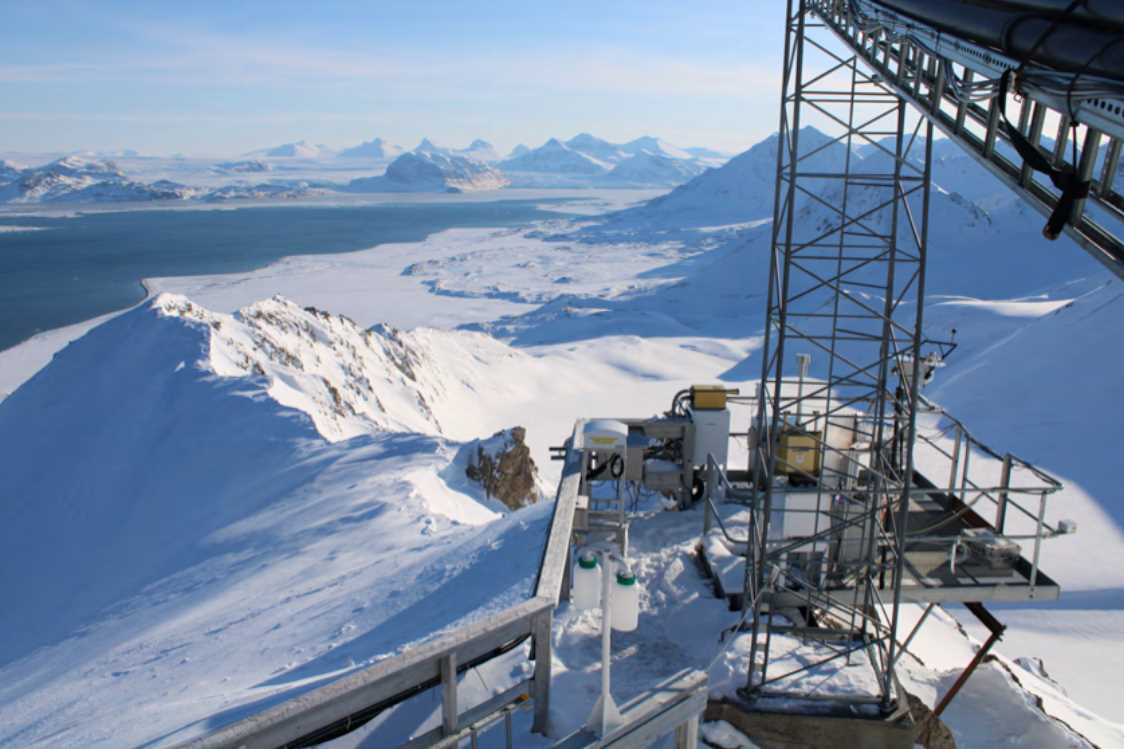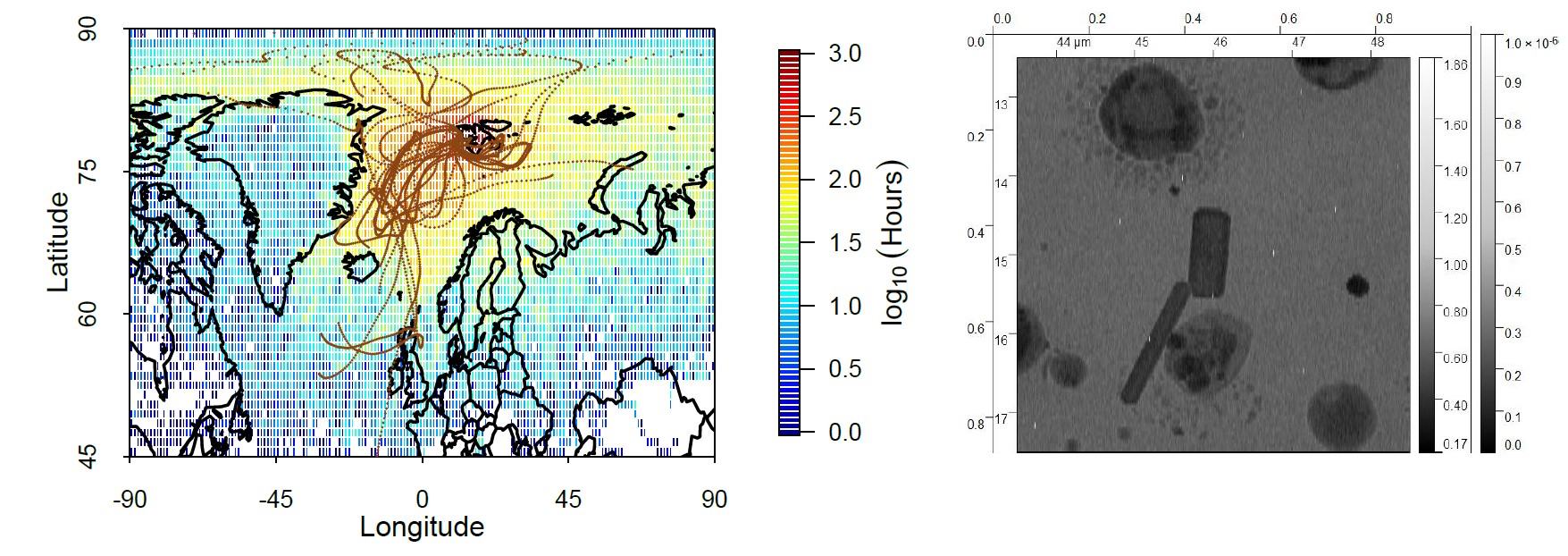by Stefania Gilardoni, Institute of Polar Sciences at the National Research Council of Italy
The objective of this study was to investigate chemical composition of submicron cloud residual particles (particles that acted as CCN and IN) though the combination of complementary single particle analysis techniques to:
- Identify organic aerosol composition in cloud residual particles;
- Identify aerosol inorganic salts in cloud residual particles;
- Map organic and inorganic compound mixing state and link it with cloud activation properties.
Sample collection
Cloud residual aerosol sampling by a GCVI inlet started on May 31, 2023. We collected multiple samples during cloud events. Sampling was performed with a Sioutas size segregated impactor modified to work at a flow lower than three liters per minute, in order to be deployed on the GCVI inlet line. Sampling was started manually at cloud offset and stopped when cloud disappeared. Overall, more than 11 samples have been collected, each of them composed by 2 size fractions (stage D from 250 nm to 500 nm and stage C from 500 nm to 1 μm). We used silicon nitride windows as a collection substrate.

Air mass origin
We identified air mass origin regions through the analysis of HYSPLITT back-trajectories. Figure 2a shows the probability residence map from 7-days back trajectories reaching Zeppelin during summer 2023 (June1st - September 30th). The map shows that most frequent trajectories reached Zeppelin after spending most of the time over the north Atlantic and the Arctic Ocean, while only a few trajectories reached the coasts of Europe and Russia. The brown markers in figure 2 indicates the back-trajectories corresponding to the campaign sampling periods, and show that air masses arriving to Zeppelin from June 26th to 29th (corresponding to samples ZEP21_89, ZEP21_90, ZEP21_91, ZEP21_92) and on July 10th (samples ZEP21_93 and ZEP21_94) were likely affected by anthropogenic emissions from northern Europe and Russia, respectively.
Sample characterization
Collected samples are characterized by Scanning Transmission X-Ray Microscopy and Near Edge XRay Absorption Fine Structure (STXM-NEXAFS). NEXAFS uses synchrotron-generated soft X-Ray beams. Transmission of photons in the energy range 278 – 305 eV is measured at 30 nm spatial resolution. With this technique we are able to investigate the mixing state of carbonaceous and inorganic aerosol since the absorbance at 278–283 eV is indicative of the inorganic salt content, while the higher absorbance in the 305–320 eV region is due to the total carbon. First analysis shows that in the submicron size range, inorganic salts account for more than 50% of particles volume, while oxidized carbonaceous species are responsible for coating of larger particles. In addition, soot and non-oxidized organics are generally observed in the core of particles smaller than 500 nm. Within the CCAC project, we applied SINS spectroscopy (Synchrotron Infrared Nano Spectroscopy and Imaging) for the characterization of submicron particles. SINS couples the high spatial resolution imaging of the atomic force microscopy (AFM) with the chemical composition analysis capability of the infrared spectroscopy. First, we tested if the silicon nitride windows used for the STXM-NEXAFS analysis could be employed for the SINS investigation and observed that this substrate does not interfere with the detection of inorganic salts and organic species in the aerosol samples. As an example, figure 2b shows the AFM image of a set of particles collected in cloud at the end of June 2023 (sample ZEP21_92), when the observatory was reached by air masses form northern Europe. Most of the collected particles have a spherical shape and are characterized by IR spectra typical of sulfate (likely ammonium salt), while other particles show a more complex aggregate structure.

Future developments
We expect to continue analyzing the collected samples both by NEXAF and SIMS to increase the statistical significance of the observations and to compare samples characterized by different anthropogenic emission impacts.



























